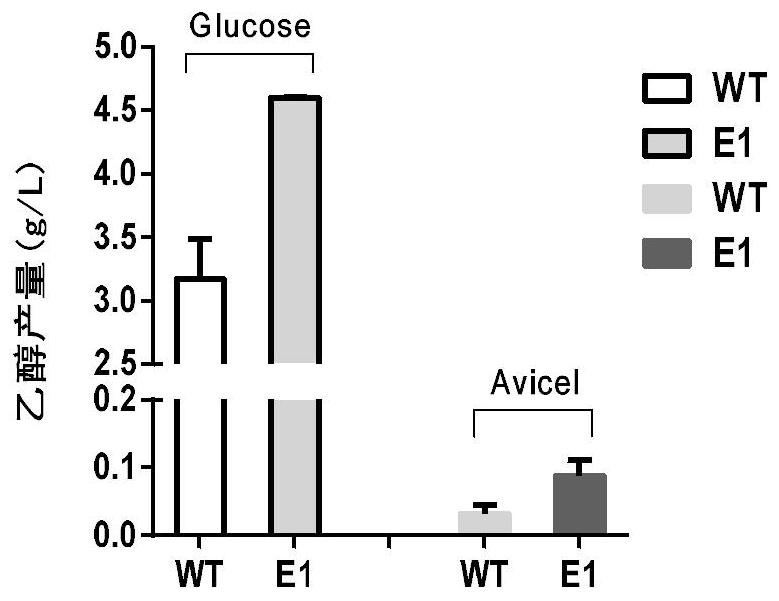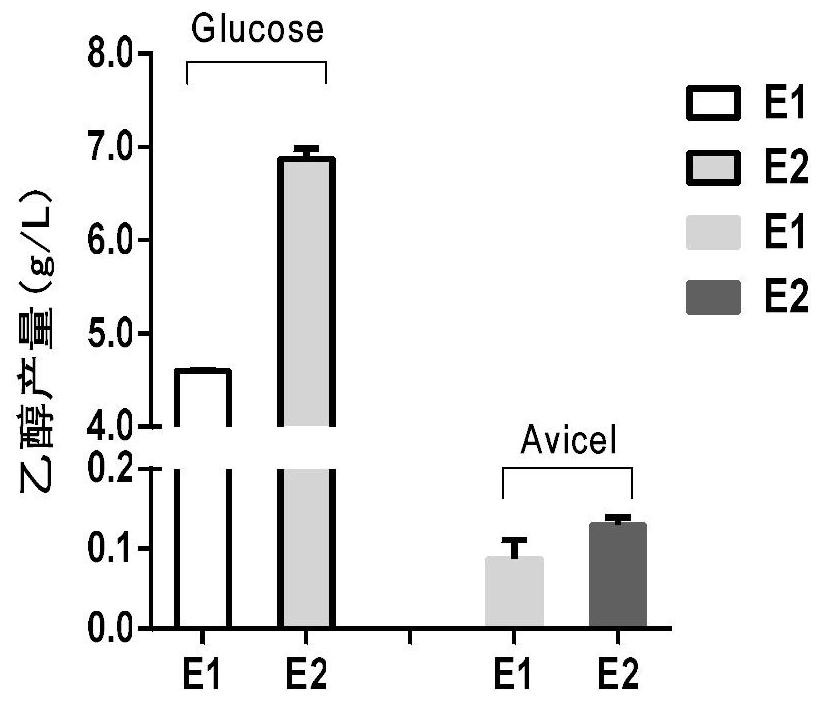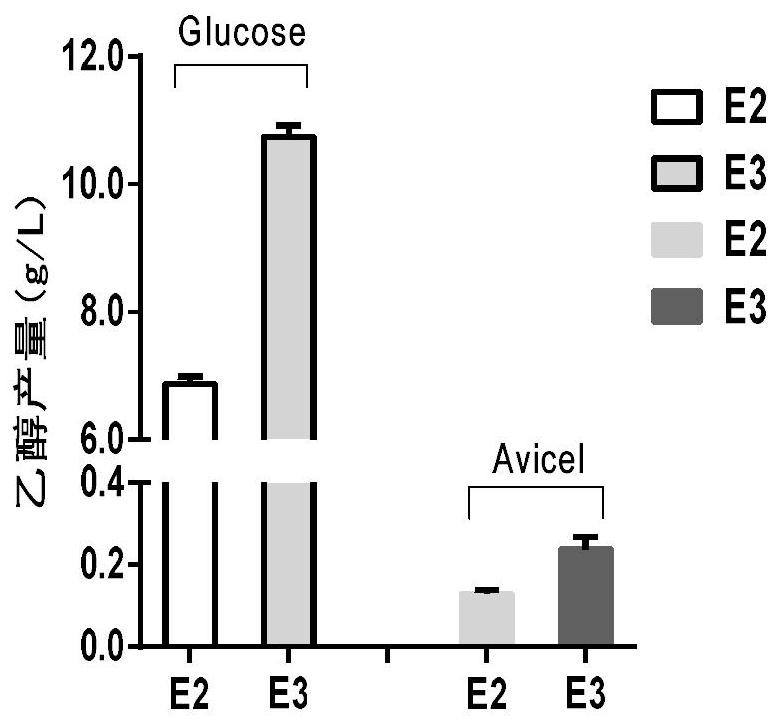Recombinant filamentous fungus for producing ethanol as well as construction and application of recombinant filamentous fungus
A filamentous fungus, ethanol technology, applied in the fields of genetic engineering and biology, can solve the problems of low ethanol production
- Summary
- Abstract
- Description
- Claims
- Application Information
AI Technical Summary
Problems solved by technology
Method used
Image
Examples
Embodiment 1
[0055] Example 1 Overexpression of alcohol dehydrogenase encoding gene Scadh1 in Myceliophthora thermophila
[0056] 1. Construction of Scadh1 overexpression vector (pAN52-Scadh1)
[0057] An expression vector was constructed with pAN52-TB-Intron (Environ Microbiol.015.17(4):1444-62) as the backbone, and the eIF-5A gene (Mycth_2297659, Gene ID: 11511639) promoter PeIF fragment (sequence as shown in SEQ ID NO.1 shown), and inserted into the linearized vector pAN52-TB-Intron digested with BglII and SpeI to obtain the recombinant plasmid pAN52-PeIF-TtrpC-neo. Then use the primer eIF-ScADH1-F / R to amplify the Scadh1 (Gene ID: 854068) fragment of the alcohol dehydrogenase coding gene from S. The excised linearized vector pAN52-PeIF-TtrpC-neo was obtained to obtain the expression vector pAN52-PeIF-Scadh1 of the alcohol dehydrogenase coding gene Scadh1 regulated by the constitutive strong promoter PeIF.
[0058] The PCR reaction system is: Max Buffer 25μL, 10mM dNTPs 1μL, upstrea...
Embodiment 2
[0093] Example 2 Overexpression of pyruvate decarboxylase gene pdc1 in Myceliophthora thermophila
[0094] 1. Construction of pdc1 overexpression vector (pAN52-pdc1)
[0095] Using Saccharomyces cerevisiae S288C (taxid: 559292) genomic DNA as a template, the pdc1 gene (Gene ID: 850733) was amplified, and the 1.175kb fragment (named as Ptef promoter) is the promoter (the nucleic acid sequence is shown in SEQ ID NO.2), and the above two fragments are recombined into the linearized vector pAN52-TB-Intron digested by XhoI and BamHI using Gibson Assembly of NEB, The recombinant expression plasmid pAN52-tef-pdc1 of pdc1 gene was obtained.
[0096] The PCR reaction system and reaction conditions in this example are the same as those described in Example 1 for vector construction.
[0097] The primers used in the vector construction in this example are as follows:
[0098] SEQ ID NO. Primer Sequence (5'-3') 72 pdc1-Gib-Ptef-F TACCGTCAAAAATGTCTGAAATTACTTTGGG ...
Embodiment 3
[0103] Example 3 Overexpression of the glucose transporter / hexose transporter encoding gene glt-1 in Myceliophthora thermophila
[0104] 1. Glucose transporter gene glt-1 expression vector construction
[0105] The glufosinate-resistant gene (bar) fragment PtrpC-bar and the TrpC terminator fragment TtrpC under the regulation of the TrpC promoter were recombined into the linearized vector pCAMBIA-0380 after digestion with BglII using the Gibson Assembly of NEB to obtain The bar gene expression vector p0380-P-bar-T under the control of the promoter TrpC.
[0106] Glucose transporter gene glt-1 (NCU01633, GeneID: 3872148) was amplified from Neurospora crassa genome, and a 1372bp fragment upstream of the gene gpdA (Mycth_2311855) encoding glyceraldehyde-3-phosphate dehydrogenase from Myceliophthora thermophila (as shown in SEQ ID NO.6) as a promoter, with the downstream fragment TcbhI of Myceliophthora thermophila cellobiohydrolase encoding gene cbh-1 (Mycth_109566) as a terminat...
PUM
 Login to View More
Login to View More Abstract
Description
Claims
Application Information
 Login to View More
Login to View More - R&D
- Intellectual Property
- Life Sciences
- Materials
- Tech Scout
- Unparalleled Data Quality
- Higher Quality Content
- 60% Fewer Hallucinations
Browse by: Latest US Patents, China's latest patents, Technical Efficacy Thesaurus, Application Domain, Technology Topic, Popular Technical Reports.
© 2025 PatSnap. All rights reserved.Legal|Privacy policy|Modern Slavery Act Transparency Statement|Sitemap|About US| Contact US: help@patsnap.com



